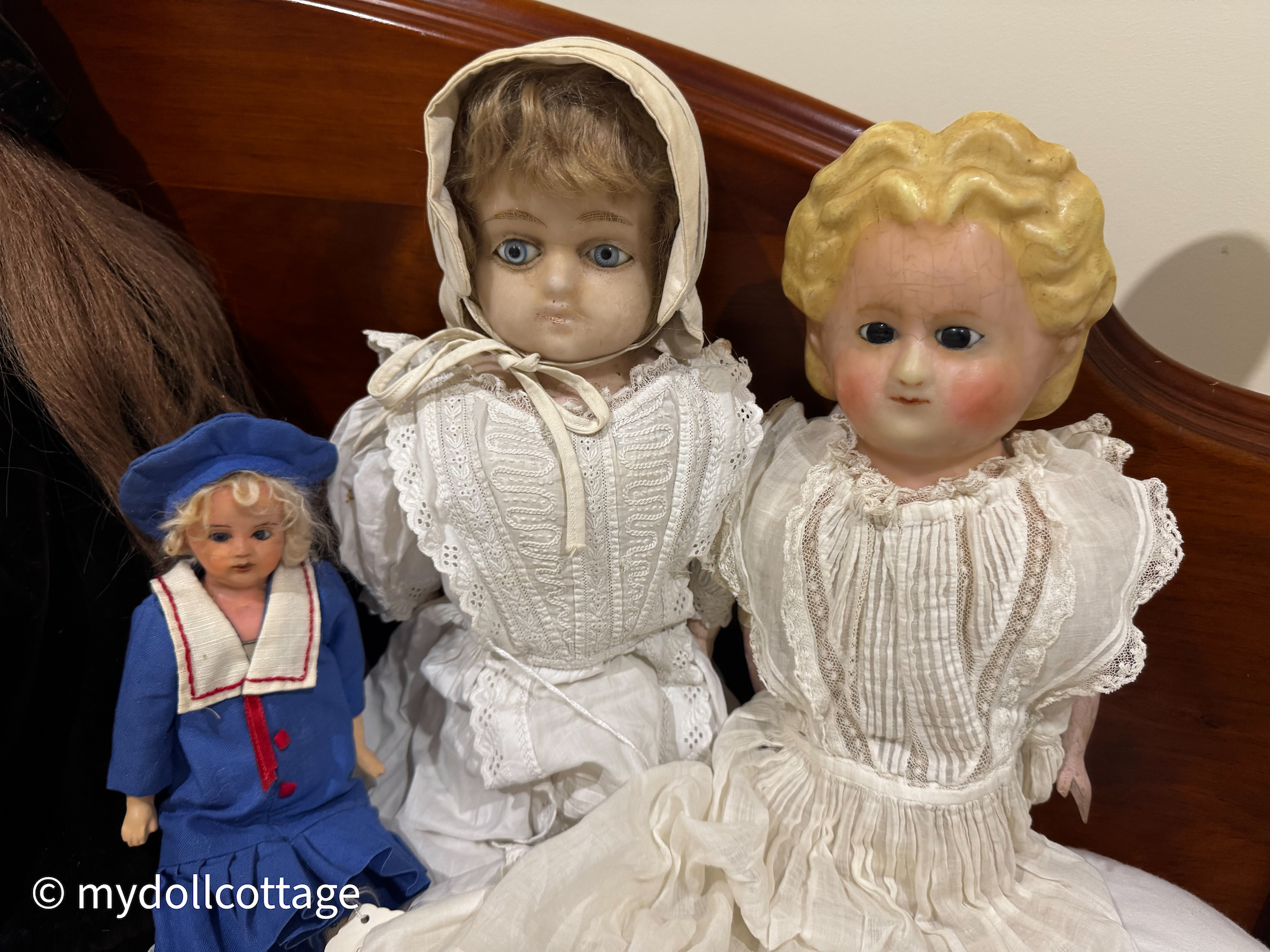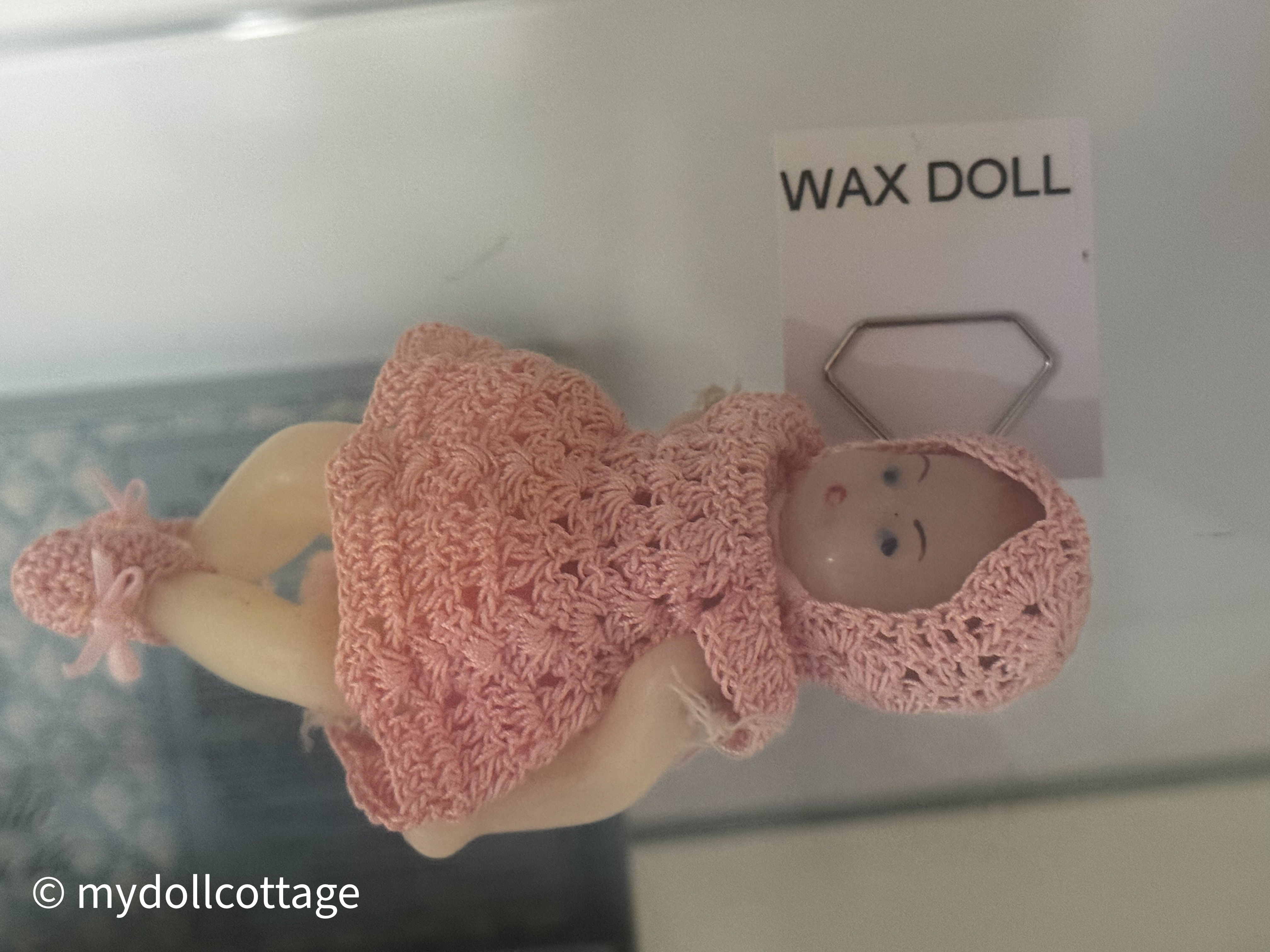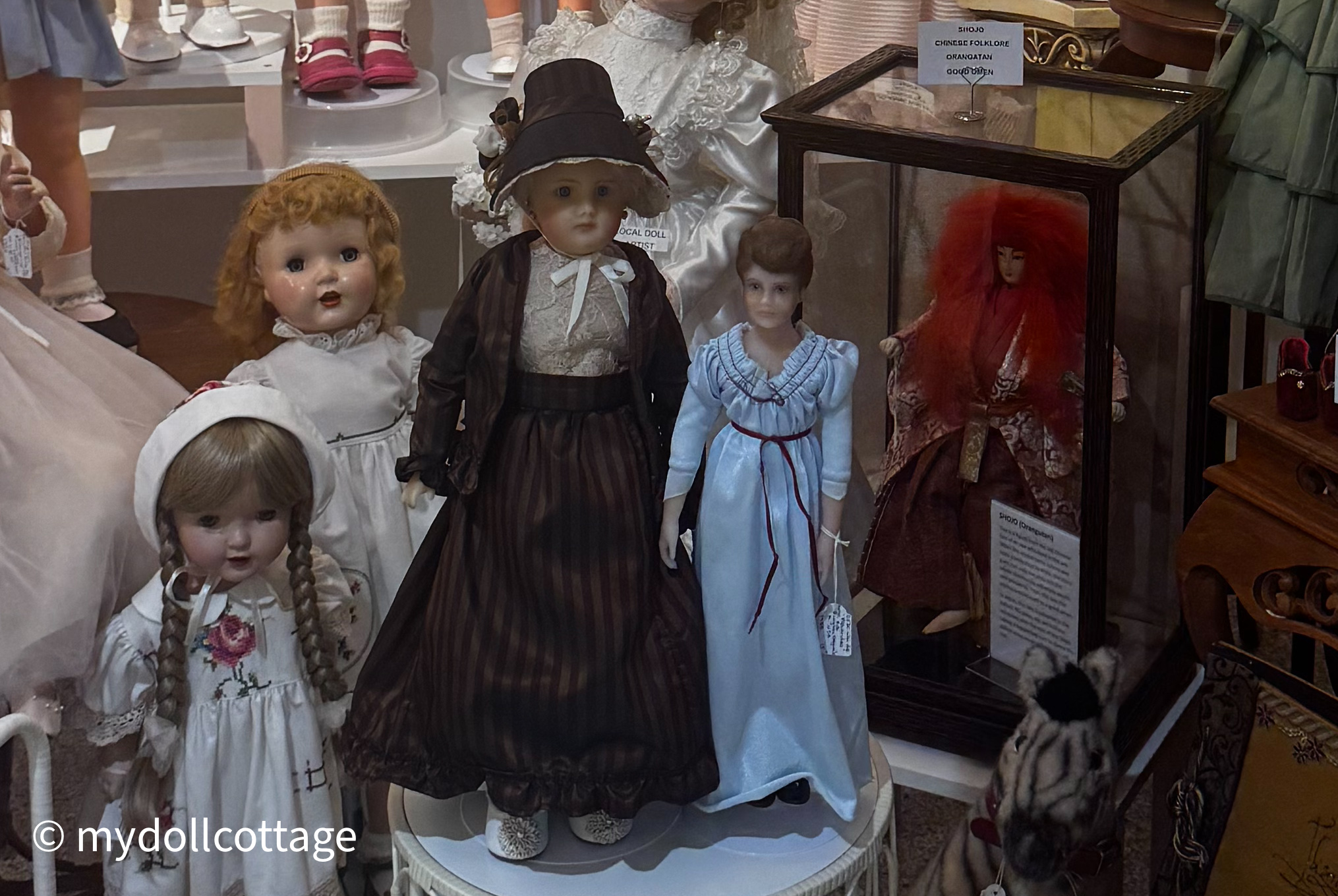
At MyDoll Cottage, we’ve recently welcomed several rare mid to late 1800s wax dolls, including a remarkable split-head example and a pair of delicate German wax-over dolls. Each one comes with its own history — and its own set of preservation challenges.
In this post, we’ll take a look at

Wax dolls were particularly popular in the early to mid-1800s, especially in England, France, and Germany. Some were made entirely of poured wax, while others used a wax overlay on a composition or papier-mâché core.
They were often prized as luxury items — dressed in fine fabrics with inserted glass eyes and mohair wigs. Over time, wax offered a more realistic look than the porcelain or wood dolls of the time, but with that realism came vulnerability.
Wax softens in heat, cracks with age, and chips if bumped. That’s part of what makes them so precious today — survival is rare.
Among our newest additions is an 1840's wax doll with a split head showing signs of cracking— a striking example of how wax ages and separates from its base when conditions aren’t ideal, seen from the cracks in her face. While it shows damage, we chose to preserve it as-is to show the true nature of the material and its challenges.
We’ve also welcomed this cute little 13" German wax-over composition doll in original clothes, mohair wig and glass eyes, believed to be mid-to-late 1800s. Her calm expressions and worn dress speak volumes about the time and care they’ve already lived through.
These dolls are not just part of our display — they’re reminders of the importance of gentle stewardship.

If you have a wax doll — whether it’s antique or a wax-over reproduction — here are our best practices for keeping it safe.
1. Avoid Heat at All Costs
Wax becomes soft or sticky above 25°C (77°F) and can melt completely in high heat. Keep wax dolls:
At My DollCottage, our wax dolls are kept in shaded glass cabinets with controlled airflow and no direct light exposure.
2. Handle Only When Necessary
Even clean hands can leave marks on wax. If you must move a wax doll:
3. Dust Gently, Never Wash
Never use water, cleaning wipes, or cloths on wax dolls.
Instead:
We brush ours just before photography or display changes, using only dry tools.
4. Watch for Signs of Deterioration
Wax dolls can develop:
If your doll shows these signs, keep it out of heat and humidity, and avoid touching the affected area. You may want to consult a conservator — or just preserve it respectfully as we’ve done with our split-head girl.
Here’s how we display wax dolls at the museum:

While some collectors restore their wax dolls, we’ve chosen to keep ours in their authentic state — including our cracked example — because their imperfections are part of their story. These dolls have survived over 150 years, and we see each crack, warp, or wear mark as a tribute to the hands that loved them before.
Our wax dolls live in the antique section of My Doll Cottage, along side early bisque, composition, tin, and bathing beauties. If you’d like a closer look, checkout our YouTube walk-through (link below), or follow us on socials by scanning the QR Code our Linktree page has all our socials for you to choose from. Here you will find featured close-up videos and photographs.
Have your own wax doll or mystery antique you’d like help identifying?
Message us anytime or send a photo — we’re always happy to chat with fellow collectors.
And stay tuned for our upcoming printable care guide for antique dolls — perfect for collectors, curators, and anyone with a few well-loved pieces tucked away at home.
With love
Shyloh
Tales from the youngest daughter of a doll collector — raised on Milo, Vegemite, and more antiques than a country op shop.
